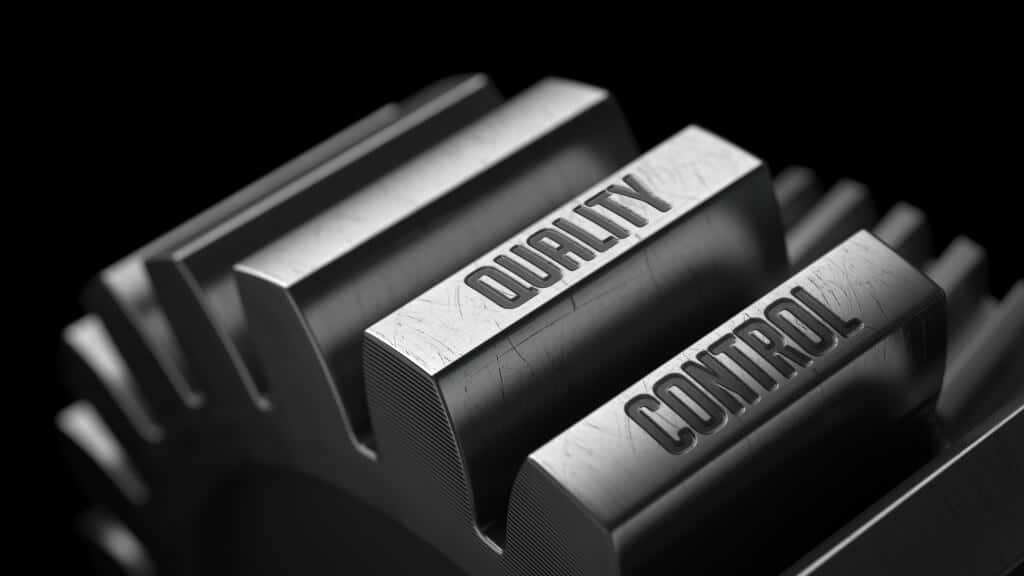For us to understand how to avoid a manufacturing quality alert, we must understand what it is.
By definition, a quality alert within the manufacturing industry is an official notification from the customer of the defects within a supplier’s delivered parts. In a typical manufacturing scenario, after a manufacturer receives a quality alert, the supplier is then required to construct and follow a remediation plan to avoid the described defects in all future deliveries.
Not taking the proactive steps to ensure the quality of your products and chronically producing poor quality items can lead to a number of problems; penalty fines from the customer or regulatory commissions, reduced customer loyalty, increased cost due to supplying replacement parts or worst-of-all, losing customers to competitors.
Within a just-in-time manufacturing scenario, poor quality can result in a customer’s worst nightmare- an unplanned shutdown. Foregoing consistent and proactive systems in place to address quality alerts can be detrimental to your organization in more than one way.

What Causes Manufacturing Quality Alerts?
From our experience, these are the top five reasons for manufacturing quality alerts:
- Improper material handling, causing cosmetic defects (ex: scratches)
- Wrong content (ex: color mismatch, required content missing)
- Improper assembly (ex: missing fasteners, poor welds)
- Defective parts (ex: failed an automated test but allowed to ship)
- Misidentified parts (ex: wrong part label, incorrect customer-required information.)
The typical remediation plan usually involves requiring operators to pay “extra attention” to avoid repeating the cause(s) of the Quality Alerts. This manifests itself into a “notice” posted at the affected operator stations. However, there is no automated enforcement or a “checks-and-balances” process in place to ensure the problem is resolved and the quality of produced parts is restored.
Avoiding Quality Alerts
After all, operators are only human and mistakes are going to be made. The question is, how can you address these situations and proactivity avoid such mistakes from taking place?
You could address the issues by:
- Shipping the defective parts and hope the customer won’t notice, which is considered a highly unethical business practice.
- Appoint managers or personnel to manually verify and check each station, which is very costly and not to mention unproductive.
OR
- Utilize the power of automation and process visibility with a manufacturing execution system (MES). An MES stops the mistakes from proceeding through the process and catches them before they ever end up being shipped to your customer.
Addressing the Top Five Causes With an MES
Improper Material Handling
Aside from training operators to use proper handling techniques (wear gloves, keep areas clean), an MES can allow operators who notice cosmetic (or other) issues to log these in the system as “defects.” These can be entered into the MES through barcode scanning technology or the MES user interface screen.
An MES is able to then notify operators of the defects just-in-time, allowing them to quarantine the parts. In addition, by integrating Process Failure Mode Effects Analysis (PFMEA) practices (assigning defects “point” values), an MES can refuse to allow parts to be sent to the next station, forcing them to be quarantined.
Classic PFMEA tools are used to evaluate potential failures within a process during its design phase. However, when integrated into an MES, production parts with defects can be flagged in real time and then routed to an offline repair operation for disposition. The operator at this station is able to review defects, repair the part (if possible), and re-introduce it back into the process.
An MES at the pack-out operation should require the operator to inspect (and vouch for) any part with defects recorded.
Wrong Content
Sequenced build scenarios require operators to build a possibly different part every cycle. In batch scenarios, the content changes at batch boundaries. This variability requires operators to be vigilant when picking the content for each cycle.
The MES enforces selection of correct content for every cycle at every operation. It does this by knowing the Bill-of-Materials of every part assembled, and the content available at every operation. Operators then get a “pick list” of content (on their display), and they confirm their selections to MES by scanning part barcodes or other discrete IO (Pick Light and/or PVA).
Improper Assembly
Closely related to picking the correct content is installing it correctly at each operation. An MES enforces proper assembly by:
- Interlocking with the DC Driver to ensure the correct torque program and fastener count for each attachment operation.
- Interlocking with DC Driver to ensure all rundowns are completed and successful.
- Selecting the correct fastening tool for the attachment operation when multiple DC Driver controllers are involved.
- Interlocking with a machine’s Cycle Start by sending process setup to drive sensor checks (part present sensor, color sensor).
- Interlocking with a machine’s process result on Cycle Complete (no machine faults during operation).
- Enforcing process-specific time constraints (foaming operation must occur within 2 hours of flame-treat operation).
Defective Parts
Not only does an MES verify each individual operation is successful or not, it also verifies all operations are performed in the correct order, with all previous operations successfully completed. This keeps parts from skipping over operations ultimately reducing an organization’s defect rates.
Misidentified Parts
Proper labeling is critical for the customer to successfully use the supplier’s parts. There are two common scenarios:
- Lead-off station: serialized build label; used by MES stations to (uniquely) identify every part.
- Pack-out station: customer part label; used by the customer. This label usually has different requirements than the build label.
At the lead-off station, an MES ensures the correct label is printed and verified (scanned) by the operator, before releasing the part to the next operation, or final pack-out.
At the pack-out station, an MES should also enforce verification of the packing location in the shipping container (scanning the physical “slot”). Correct placement in the container is critical for sequenced just-in-time shipment.
In Summary
Manufacturing quality alerts are major problems that must be addressed through the proper automation and human interaction that can be provided through MES. As an MES provides many benefits to the assembly process, one of the most valuable benefits is keeping a constant eye on common causes of poor quality, and helping to control and avoid quality alerts from ever happening.
Interested in working with us?
If you have an MES project and are interested in learning how we can partner with you to ensure a rapid, quality product, let’s talk!

